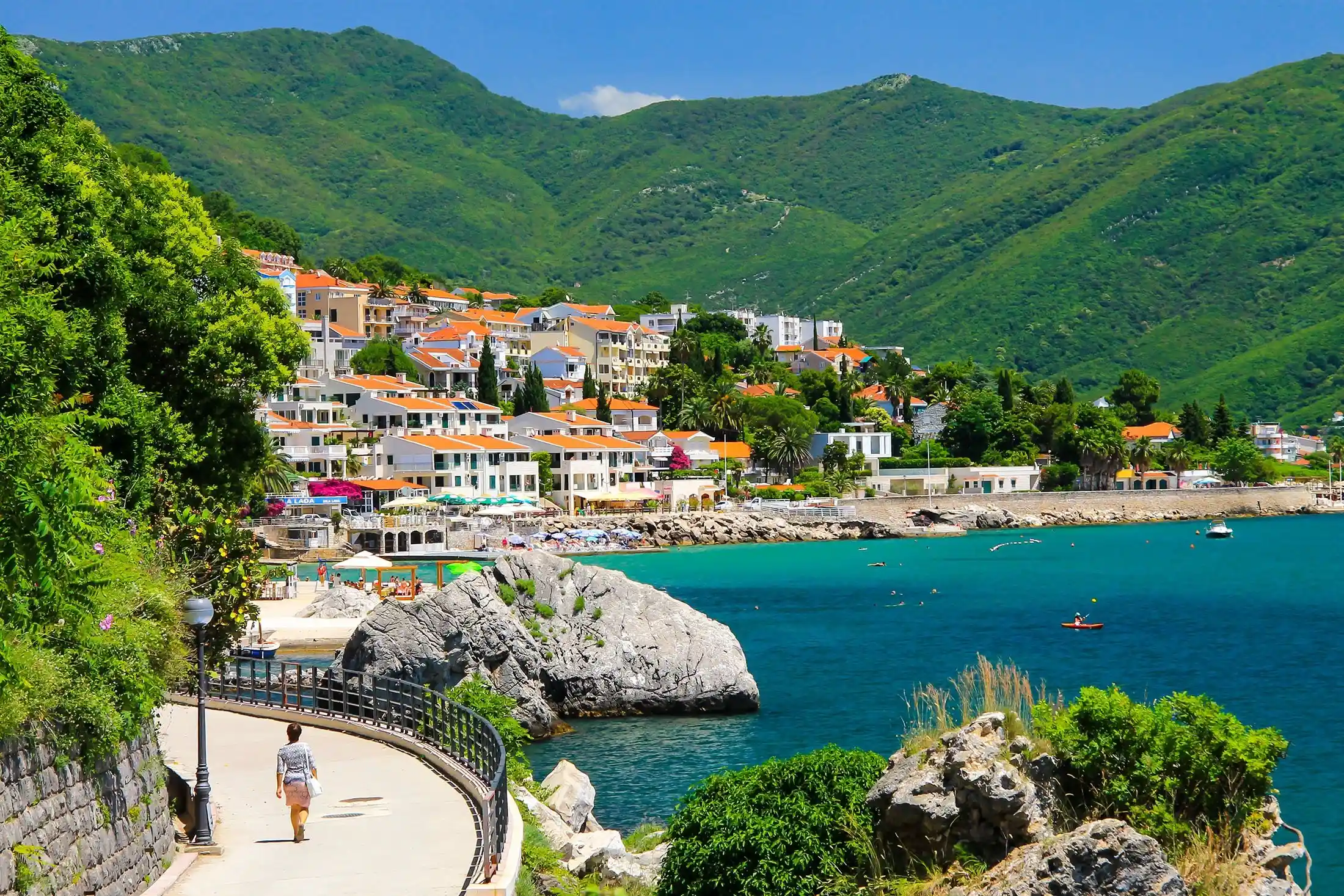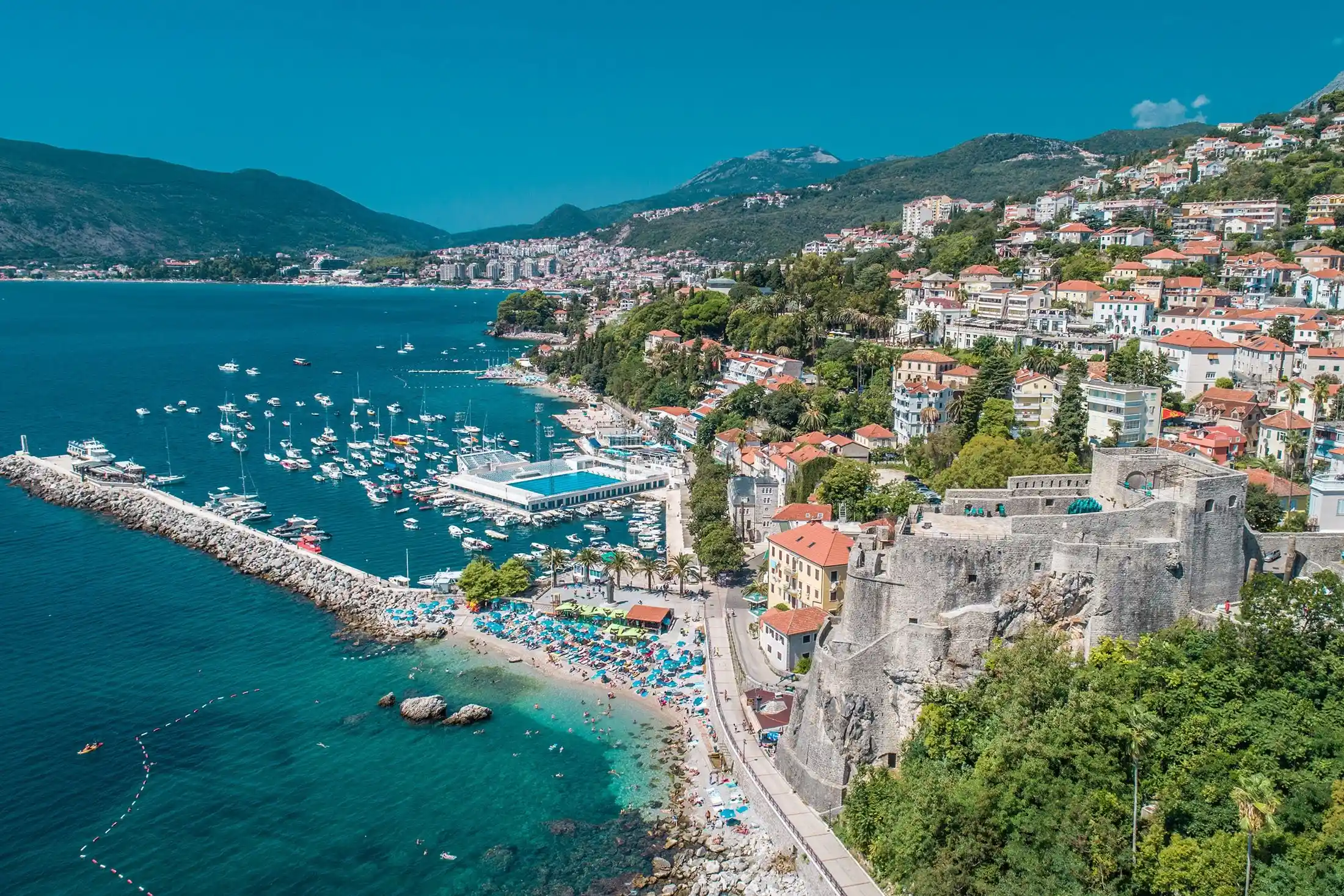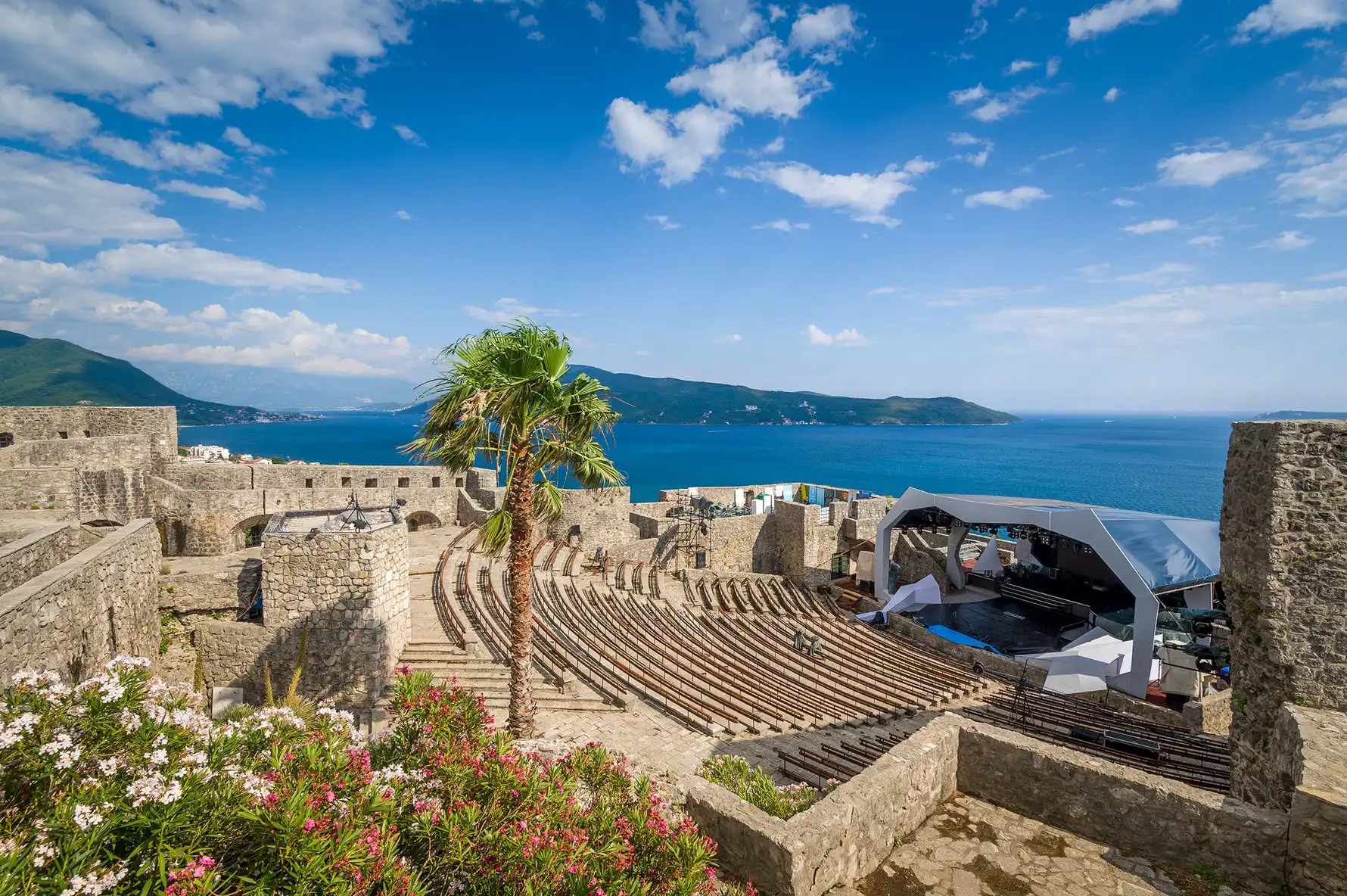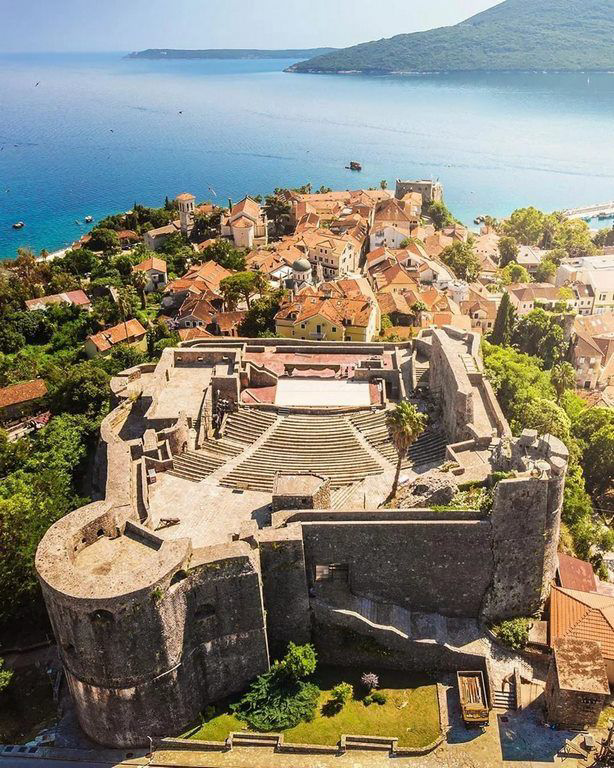
Present

About Montenegro
Montenegro is situated in the west-central Balkans, nestled at the southern end of the Dinaric Alps. It shares borders with the Adriatic Sea and Croatia to the southwest, Bosnia and Herzegovina to the northwest, Serbia to the northeast, Kosovo to the east, and Albania to the southeast. Montenegro's administrative capital is Podgorica, though its cultural center is the historical capital and older city of Cetinje.

Montenegro, often referred to as the "Pearl of the Mediterranean," boasts a diverse and breathtaking landscape that ranges from rugged mountains to pristine coastline. This small Balkan nation is home to four stunning national parks, each offering its own unique natural wonders and outdoor adventures. Among these, three are under the protection of UNESCO, showcasing Montenegro"s commitment to preserving its natural heritage.
Herceg Nov
Herceg Novi is a picturesque coastal town located at the entrance of the Bay of Kotor in Montenegro. It boasts a rich history, stunning landscapes, and a charming Mediterranean atmosphere. Herceg Novi is nestled between the Adriatic Sea and the rugged mountains of Montenegro, offering a diverse landscape that combines rocky shores, lush greenery, and azure waters. The town is renowned for its numerous parks and gardens, including the famous Pet Danica promenade, which stretches along the waterfront and is adorned with palm trees and colorful flowers.

Throughout its history, Herceg Novi served as an important strategic outpost and trading center, due to its strategic location at the entrance of the Bay of Kotor. The town is dotted with historic landmarks and architectural treasures, including the imposing Kanli Kula fortress.

Herceg Novi is also known for its cultural heritage, with a vibrant arts scene, festivals, and events that celebrate its diverse heritage. Herceg Novi enjoys a mild Mediterranean climate, with warm summers and mild winters, making it an ideal destination for year-round travel.
About the Venue
Kanli Kula Fortress
The Kanli Kula fortress in Herceg Novi is one of the most popular places in Montenegro, and attracts millions of tourists from all over the world every year. The name of the fortress, translated from Turkish, means "Bloody Tower." It is located at the top of a mountain in the northern part of the Old Town, at an altitude of 85 meters above sea level, offering a panoramic view of the entire city.

During the 1960s, the fortress was reconstructed and opened to visitors as an open-air museum, and the courtyard was transformed into a summer amphitheater. The summer stage was designed for 1000 seats and to this day remains one of the most beautiful summer stages on the entire Adriatic coast.
